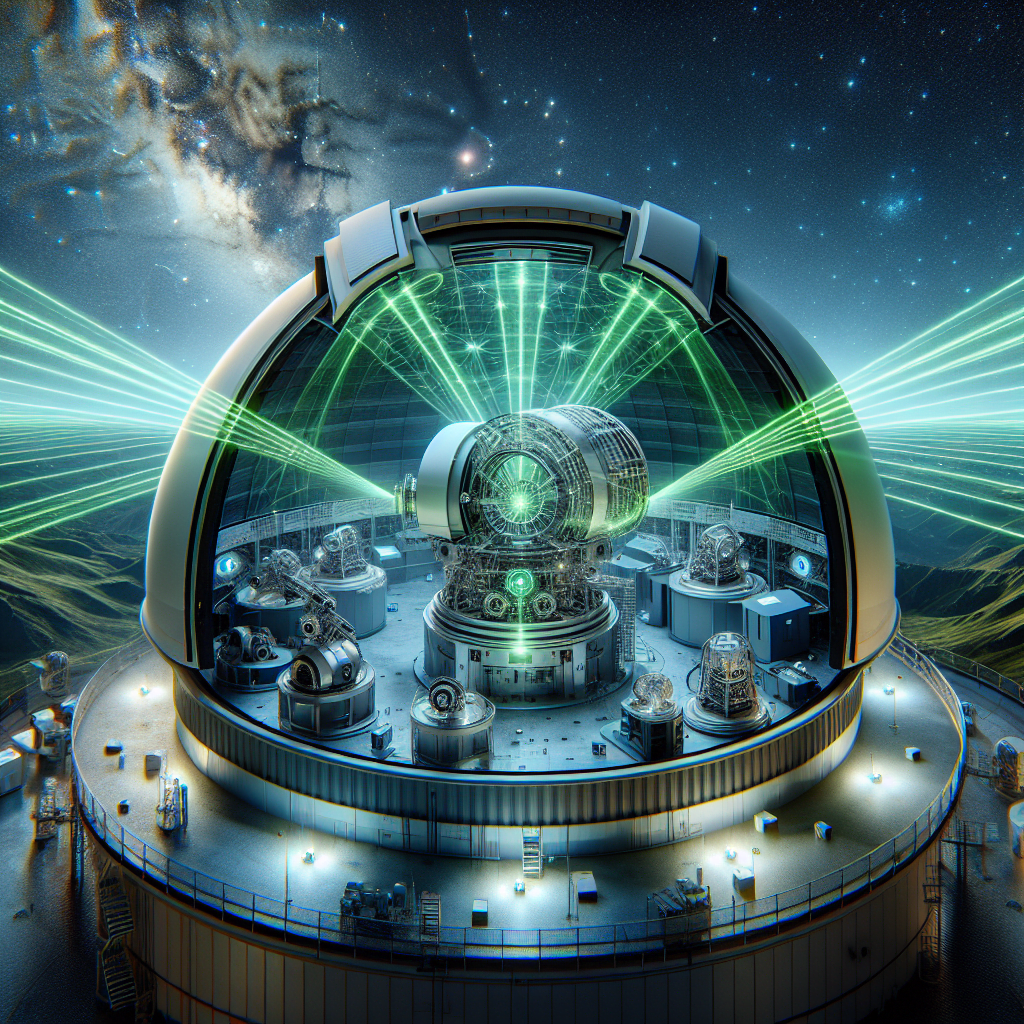Imagine being able to see the universe with unprecedented clarity and precision, as if you were peering through the lens of a super-powered camera. Now, what if I told you that this incredible advancement is possible through a technology called adaptive optics? Adaptive optics in telescopes is a revolutionary technique that compensates for the distortions caused by Earth’s atmosphere, allowing astronomers to capture sharper and more detailed images of celestial objects. In this article, we will explore the fascinating world of adaptive optics and how it is transforming our understanding of the cosmos.
Table of Contents
What Are Adaptive Optics In Telescopes?
Definition of Adaptive Optics
Adaptive Optics (AO) is a technique used in telescopes to correct for the distortion caused by the Earth’s atmosphere, allowing for clearer and sharper astronomical observations. It involves the real-time measurement of atmospheric aberrations and the subsequent adjustment of the telescope’s optical elements to compensate for these distortions. By actively correcting for atmospheric turbulence, adaptive optics enhance the resolution and quality of images obtained by telescopes, enabling scientists to observe celestial objects with unprecedented clarity.
History of Adaptive Optics
The concept of adaptive optics dates back to the early 1950s when astronomers first recognized that the Earth’s atmosphere introduced distortions that compromised the clarity of images captured by telescopes. However, it wasn’t until the 1980s that technological advancements made it possible to fully implement the idea of adaptive optics in telescopes. The early systems were initially used in the military for tracking satellites, but their potential in the field of astronomy was soon recognized. Over the years, adaptive optics systems have continually evolved, becoming integral to modern astronomical observations.

Basic Principles of Adaptive Optics
atmospheric turbulence causes distortions in the incoming light, resulting in a blurry image as it reaches the telescope. Adaptive optics employ a three-step process to overcome this challenge. First, the wavefront sensing component measures the distortions in the incoming light caused by the atmosphere. This information is then used in conjunction with a control system to manipulate the deformable mirrors, which actively modify the shape of the telescope’s optics to compensate for the distortions. Finally, the wavefront reconstruction component analyses the corrected image and produces a clear, high-resolution representation of the observed object.
Components of Adaptive Optics System
An adaptive optics system consists of several key components that work together to improve the performance of a telescope. These components include a wavefront sensor, deformable mirrors, a control system, and a wavefront reconstructor.

Wavefront Sensing
The wavefront sensor is a crucial part of an adaptive optics system as it measures the distortions in the incoming light caused by the Earth’s atmosphere. There are various types of wavefront sensors, such as Shack-Hartmann sensors and curvature sensors, each employing different techniques to map the wavefront distortions. By accurately characterizing the atmospheric aberrations, the wavefront sensor provides valuable information for correcting the distortions.
Deformable Mirrors
Deformable mirrors are another critical component of adaptive optics systems. These mirrors are flexible and can change shape rapidly based on the information received from the wavefront sensor. By precisely adjusting the shape of the mirrors, it is possible to counteract the distortions introduced by atmospheric turbulence. These deformable mirrors are typically composed of multiple small actuators that can move and deform the mirror surface in real-time, allowing for the dynamic correction of the telescope’s optics.

Wavefront Reconstruction
After the wavefront sensor measures the atmospheric distortions and the deformable mirrors adjust to compensate for these distortions, the wavefront reconstruction process analyzes the corrected wavefront and reconstructs a clear, high-resolution image. This involves mathematically processing the data obtained from the wavefront sensor and using it to reverse the effects of atmospheric turbulence. By accurately reconstructing the wavefront, astronomers can obtain images that are virtually free from the blurring effects of the Earth’s atmosphere.
Control System
The control system plays a vital role in adaptive optics systems by coordinating the actions of the wavefront sensor and the deformable mirrors. It ensures that the measurements from the wavefront sensor are accurately used to adjust the deformable mirrors in real-time. The control system must be fast and precise, continuously monitoring and adapting to changes in the atmospheric conditions to maintain optimal correction. Advanced algorithms and computing power are employed to make these rapid adjustments, allowing astronomers to obtain high-quality images even under turbulent atmospheric conditions.

Modes of Operation
Adaptive optics systems can operate in various modes depending on the specific requirements of the observation. The most common modes include “tip-tilt” correction, which compensates for the large-scale atmospheric distortions, and “higher-order” correction, which addresses smaller-scale distortions that affect the fine details of the observed objects. Additionally, adaptive optics systems can operate in open-loop or closed-loop modes, with closed-loop systems providing more precise correction through continuous feedback from the wavefront sensor.
Advantages of Adaptive Optics in Telescopes
The implementation of adaptive optics in telescopes has revolutionized astronomical observations. By compensating for the distortions caused by the Earth’s atmosphere, adaptive optics systems significantly improve the image quality and resolution of telescopes. This enhanced resolution allows astronomers to study celestial objects with much greater detail, including finer structures and fainter features. Adaptive optics have been invaluable in numerous areas of research, from studying distant galaxies and exoplanets to resolving intricate details in the surfaces of stars and planets within our own solar system. With adaptive optics, astronomers can overcome the limitations imposed by atmospheric turbulence, unlocking new insights and expanding our understanding of the universe.

